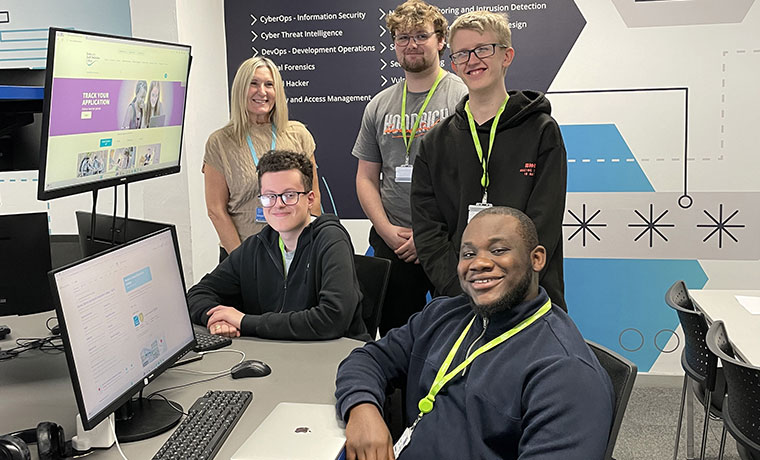Organisations need technology to overcome the ’empathy gap’ in education

The past 18 months has been undeniably difficult for businesses and customers alike as they’ve had to adjust to rapidly changing circumstances and increased uncertainty. However, the education sector has especially felt the brunt of this, as many students have relied on university and college staff for support and guidance throughout the period. With lockdowns disrupting the delivery of their education and a transition to digital learning and teaching almost overnight, this has been an exceptionally huge adjustment for students.
Communication has been arguably the essential element of the sector’s COVID-19 response, from providing learning to helping students, parents and prospects understand what the restrictions mean for their education experience. This is a trend that is likely to continue with coronavirus cases increasing across the UK and lecturer strikes on the horizon, meaning that the impact and future of their education is unclear.
At the same time, these changes have occurred against an ongoing process of technological advancements and changes in customer service in the private sector that affect the ways students expect to be able to contact Education institutions – and the level of ‘customer service’ they receive. Now, college and university institutions must leverage the right technology to drive experiences in a way that is suited to each individual students’ needs.
However, while education institutions appear to have the technological infrastructure to support this, there is still more that can be done to ensure students are receiving experiences that provide meaningful solutions when and where it’s needed. The transformation of student needs over the course of the pandemic have highlighted the need for revaluating the sectors’ customer experience strategy, with 40% of those working in the sector reporting there was an empathy gap. Empathy means helping students and parents feel that their concerns are heard and understood – even where these cannot always be fully met.
Recognising and addressing the empathy gap requires transformation within the sector. With this in mind, here are three considerations for educations providers looking to build more empathetic experiences.
Adapting and evolving to student needs
The way students have received their education has changed profoundly since the beginning of the pandemic, with the majority of course content being delivered through online lessons. Changing restrictions has meant that consistent and timely communication with students was needed from universities and colleges to provide guidance around how this would impact their education. In turn, anxieties around this and increased isolation has negatively impacted mental health, with 88% of young people reporting that they experienced mental distress during or before the pandemic, causing them to reach out for more support.
During this period, those working within the sector reported seeing an increase in contact across all their virtual channels, highlighting the importance of having multiple channels so students can reach out in a way that is personal and suited to their situation. But, ‘customer satisfaction’ requires more than being available and responding to a query.
Following such uncertain times, students expect universities and colleges to show empathy towards their situations. Yet, 32% of those working within the education sector reported that they did not think students felt remembered, heard and understood.
Providing empathetic experiences does not only benefit students in the short term, but it can also help them build customer loyalty after they graduate. For example, by making students feel that their universities and colleges care for them, Alumni may feel more inclined to return to help in the future, whether that’s as a guest speaker, to support them with projects, or even become a resource for funding injections.
Whether or not education organisations are technologically equipped to handle the volumes of citizen enquiries they receive, more can be done to ensure that students’ enquiries are dealt with effectively, and in a way that shows they are really being listened to.
Personalising experiences through predictive analytics
Students want to know that their universities and colleges care about their concerns, and only through providing empathetic experiences that are personalised to their individual situations can this be done.
Currently, 20% of those from the education sector believe that their interaction platforms, such as social media and phone, do not allow an understanding of individual needs and preferences. This suggests that the sector could do more in terms of collecting and unifying data that would provide such insights.
Adopting predictive analytics technology can allow college and university institutions to utilise data collected through their interaction channels and build individual profiles that provide insight into students’ needs, wants and preferences. Through this, organisations offer personalised experiences by predicting why a student may contact them and be ready with a solution that is suited to their individual needs when they do.
Scaling empathetic experiences with cloud and automation software
As education institutions have witnessed a sizeable increase in those contacting their communication channels, being able to keep up with this demand is essential to ensure that they continue to provide students with timely and consistent experiences. However, while 77% of those working in the sector said that their contact centre had ensured business continuity over the previous 12 months, 44% of respondents reported that scaling contact centres in line with demand was a problem.
Scalability has of course been a huge issue for many organisations as pandemic-enforced changes have affected how and in what volumes organisations are contacted. Education institutions need to look towards greater flexibility and agility to ensure they can meet the changing demands of student contact.
Leveraging cloud technology would ensure that college and university organisations’ contact centres can adjust to changing demands and allow students to receive the support they need when and where it’s needed. Further investment in automated services, such as Interactive Voice Response and AI chatbots, can also be deployed at scale to handle queries and ensure that students receive consistent empathetic experiences through machine learning.
Higher empathy, further experiences
Looking ahead, college and university institutions must invest in their customer experience strategies to continue to provide students with support and ensure that they are organisations that care to potential prospects and parents. Plugging the ‘empathy gap’ by making sure students feel heard and understood through personalised experiences is essential to this and leveraging the right technology can be the first step in the process. By adopting predictive analytics and cloud software, organisations can ensure empathetic experiences are delivered consistently at scale.
By Mark Caldwell, Senior Account Executive – Education, Genesys












Responses